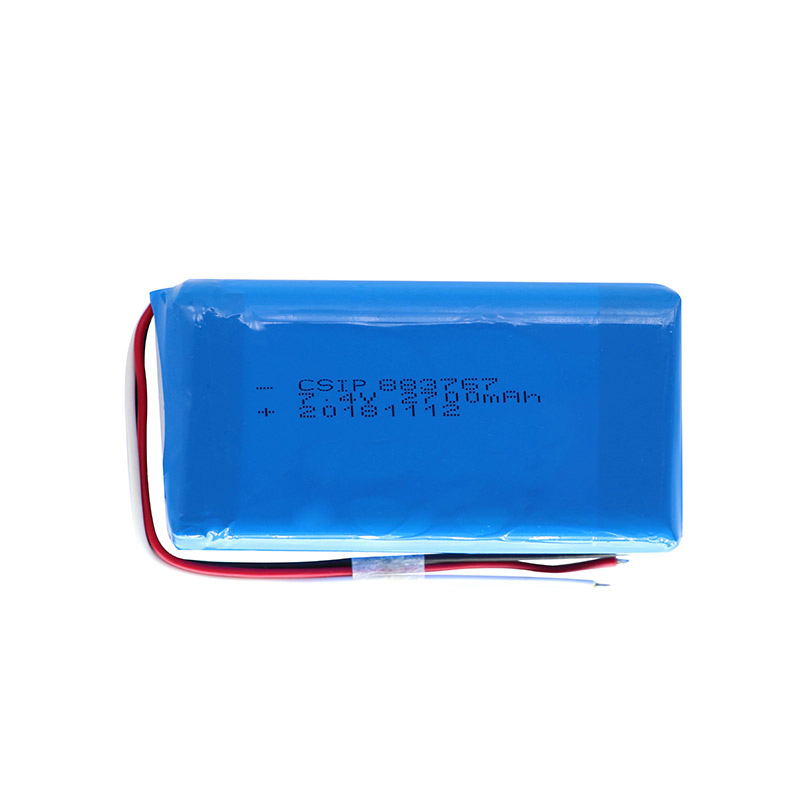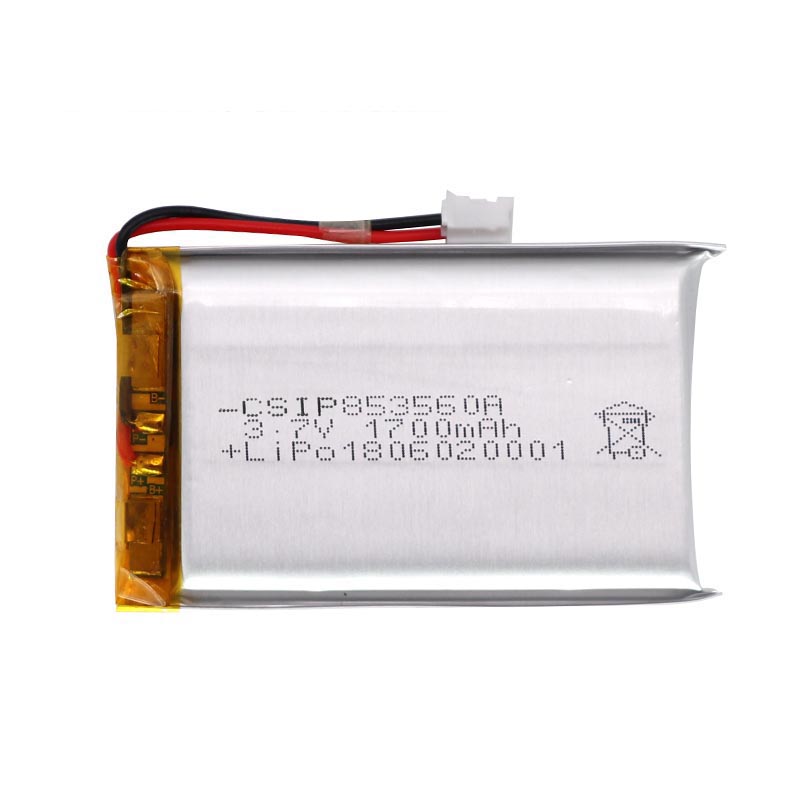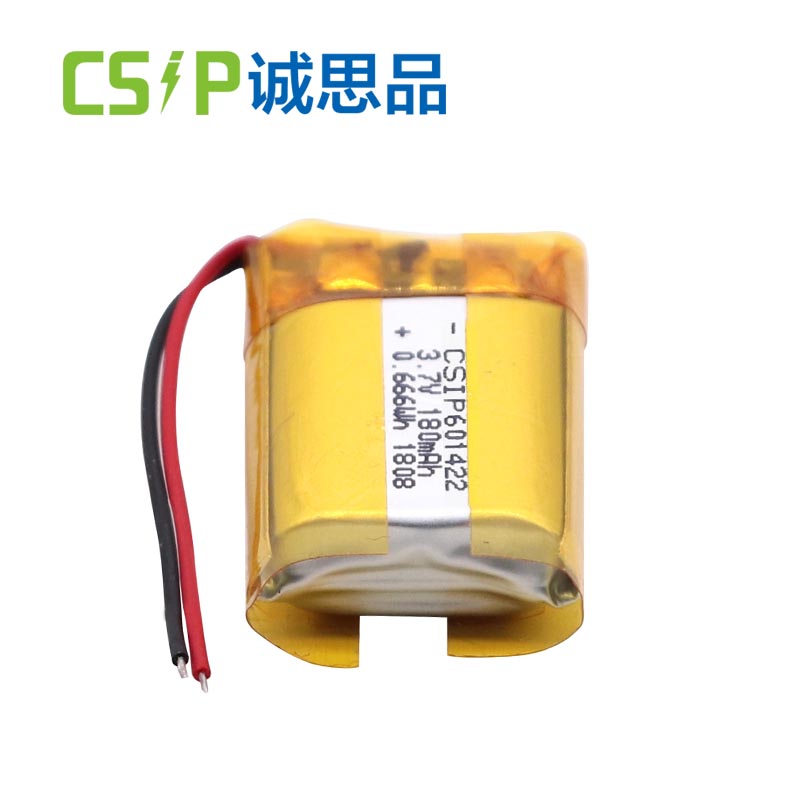With the popularity and prevalence of consumer grade drones, I'm sure many of us have come across drones or have our own drones. Of course, when we play with drones, we are sure to encounter various problems. For example, the problem of bulging drone power batteries, where a bulging battery basically announces the imminent end of the life of the drone's power battery. So what is the cause of a drone polymer lithium battery bulge? How do you fix a lithium battery bulge? Today the drone battery manufacturer will talk to you about the drone battery bulge those things!

What is the reason for the drone polymer lithium battery bulge?
A, the battery itself quality and process problems
The quality of the battery itself is not very good, resulting in the battery in the use of the process is more likely to occur bulging phenomenon. This mainly depends on the manufacturing of the battery manufacturer's own manufacturing level and control of the quality of raw materials such as upstream battery cells.
For example, in the battery manufacturing process, if the quality of raw materials is not very good (the quality of the electrolyte itself during the production of the cell factory, or the liquid level is not standard, the quality of the positive and negative electrode materials is not up to par, the motor coating is not uniform), in addition to the differences in the technical water of the manufacturing equipment, such as different control of environmental humidity, coating, drying, impurity removal and other precision, will lead to the production of manufactured batteries in the internal resistance, capacity In addition to the differences in manufacturing equipment technology, such as different control of environmental humidity, coating, drying, removing impurities and other precision, will lead to the manufacture of batteries in the internal resistance, capacity, voltage, there are certain differences, such as poor quality will be reflected in the internal resistance of large, low capacity discharge efficiency, coupled with high internal moisture content of the battery, reflected in the use of the drone battery is easy to heat up hot, capacity decay fast, short range, etc., and then not long will occur the phenomenon of battery bulging.

Second, the use of the drone battery scenarios and habit issues
(1) battery performance and drone work requirements do not match, different types of drone use, the requirements of the drone battery performance will be different, for example, ordinary aerial photography of drones and load class drones (such as plant protection, logistics, etc.), they use the working conditions are completely different. For ordinary aerial photography drones, their flight speed requirements are not very high, the load is also light, so the battery does not need to support the work of a large current, while the work of heavy drones need to be stable and continuous high current discharge, the requirements of this battery performance is relatively high. If the low discharge rate of the UAV battery is used in the heavy UAV battery, the battery will become hot and high, and then produce gas, and the battery will be bulged and scrapped.
(2) Drone operation and use habits are different, the occurrence of bulging packs will also be different. For example, if the drone battery is used under normal circumstances, frequent high and low speed interchangeable flight drone battery and stable flight drone battery compared to frequent high and low speed flight drone battery to be more likely to occur bulge, the service life will also be shorter.
(3) In terms of charging and discharging, drone batteries that are frequently over-discharged or completely discharged are relatively more likely to bulge and have a shorter service life. Consumer drones or aerial drones have a bms protection system for the battery itself, which basically does not overcharge, but many DIY drones use batteries without these configurations, which are prone to overcharging when charging, and overcharging is also the reason for the bulging of the battery.
(4) Excessively high temperature conditions used or stored, the probability will trigger the battery bulge.

Can a bulging ion battery be repaired? How do I fix a lithium battery bulge?
"Repair can definitely be done", the engineers of Zhengfang Technology tell you that there is a certain probability that a bulging battery can be repaired, and when the quality of the battery core is better, the probability of repair will be higher. Of course, repair still requires professionals, white players do not recommend hands-on repair!
Prepare a multimeter and measure the voltage status of the single cell in advance. Theoretically, the repair can be completed only if there is a voltage of about 0.5V. If the voltage is 0 and there is no change, please do not try to repair this kind of battery, this kind of battery is short-circuited inside. It cannot be repaired. Also, do not try to repair a battery that heats up quickly during the repair process.
NiMH battery charger, without battery status detection, this charger is usually a low-current constant-current output of a voltage and current, slowly fill the power. It is important to prepare this material to take into account that some batteries may have been left for a long time with a voltage of less than 1V, or even 0.0V in some cases, after a bulging pack. This charger can reactivate the lithium ion battery to around 1.5V with a small current.

Special Li-Ion battery chargers, (without battery status monitoring, if the charger type cannot be identified, a normal Li-Ion battery can be prepared as well). When a Li-ion battery with a voltage lower than 1V is activated and has reached a voltage of around 1.5V, connect the positive and negative terminals of the cell to the Li-ion battery charger. If the Li-ion battery charger starts to indicate a charging state, measure whether the voltage of the positive and negative terminals of the charger in line has exceeded 2V. Disconnect the charger if it is abnormally hot. If normal, wait for the charger to be filled with instructions. Note: If the lithium ion battery charger does not recognise a lithium ion battery below 2V, load a normal lithium ion battery to activate the charging state of the charger and then disconnect immediately.
Active balanced lithium ion battery charger, when a single bulging lithium ion cell prompts a full point, the bulging phenomenon will be slightly better, after a few charges and discharges, ideally the bulging phenomenon will disappear completely, the repaired lithium ion battery will find some changes in shape, this is normal. Note: The lithium ion battery after bulge repair must be charged using an active equalisation charger. Use should be terminated slightly in advance.


 Home
Home CSIP
CSIP  Mar 17,2023
Mar 17,2023 
 Why soft pack lithium batteries bloat-CSIP battery
Why soft pack lithium batteries bloat-CSIP battery 
 Mar 03,2023
Mar 03,2023 








